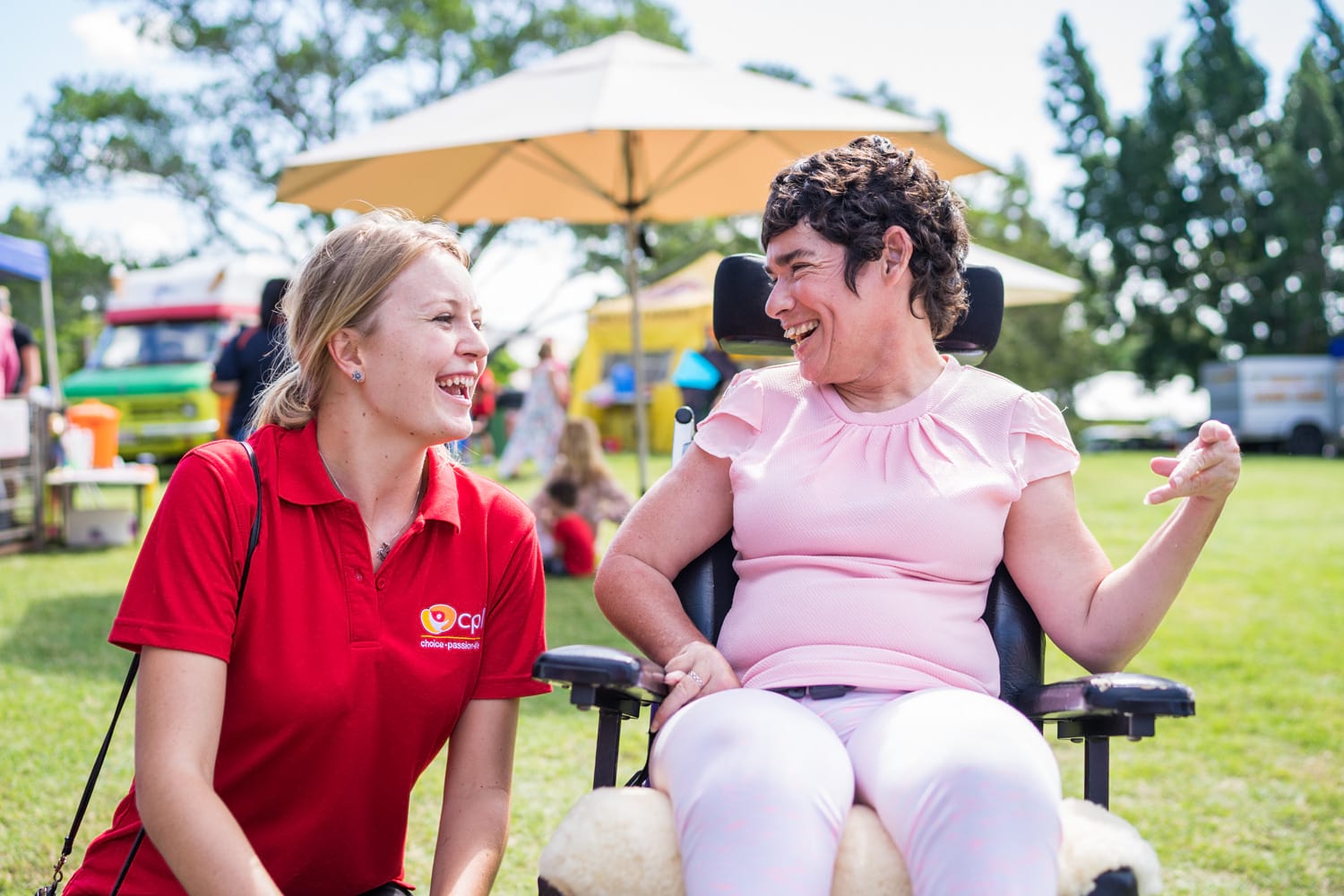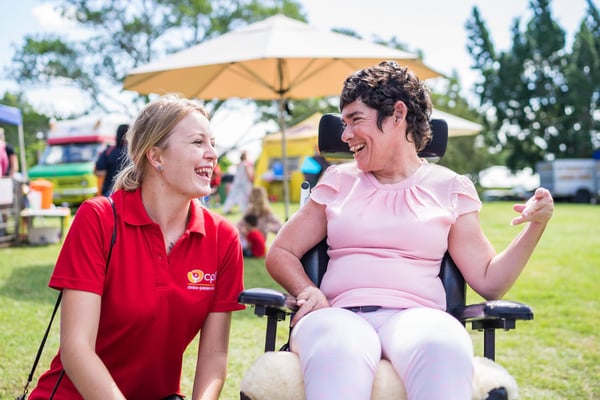
6 min read
It’s not often that you come across a group of people so passionate about helping others that they’ll willingly take on physically, mentally and emotionally challenging jobs in order to make the world a better place. But that’s exactly what the people at Choice, Passion, Life (CPL) do everyday for thousands of people with disabilities in Queensland and Northern NSW.
A few weeks ago, Emma Elder, CPL's Employee Engagement Manager, joined me on our webinar about tackling common recognition and reward frustrations. She shared her experience working with CPL’s 2,500 strong team of support workers, employment consultants, allied health professionals and therapists, and business administrators.
Emma has the unique challenge of keeping this vast network of employees engaged, despite having them working across not just 60 different CPL branches but the homes of thousands of clients.
In this HR Heroes post, she shares the approach her team took to identify the areas CPL needed to focus on to move the needle on engagement and improve how its dispersed teams connected with, recognised and motivated one another.
Start engaging employees by listening to them
Q: You mentioned during the webinar that the responses from your engagement survey were what prompted you to improve employee benefits, communication and recognition and reward. Tell me about why, when and how you started surveying employees and seeking their feedback?
Emma: You can’t improve what can’t be measured. We wanted to make sure we were focusing our time, money and energy into the right things that would help increase employee engagement, because if we focussed our time on the wrong things, we know this could have quite the opposite effect.
We also wanted to know what we were doing well (to make sure we weren’t fixing things that weren’t broken) and why our employees love working with us (so we could continue doing those well and promote them). This helped form part of our Employee Value Proposition.
With determining how and when; we’d participated in university studies in the past, and built our own surveys to measure employee engagement, and although these were free or cheap we couldn’t see a long term plan using these types of tools so we engaged an organisation who specialises in employee surveys.
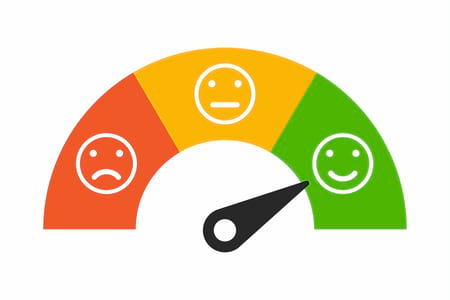
Q: How did you identify what questions to ask and what tools did you use?
Emma: There are some great, free examples of employee engagement/satisfaction survey questions and studies available on the web that can help you frame the wording of your questions to get the best results from your survey. It’s important not to influence too much toward positive or negative responses from your questions or you won’t get accurate results.
We included a handful of questions which were required to give an employee engagement score, based on studies regarding key engagement drivers. The must-have topics for us included culture/values, career management, rewards, and customer service. These must-haves were driven by our organisational values, as well as our employee value proposition, to make sure we’re hitting the mark where we needed to for our employees’ engagement.
We included questions that covered topics such as management, leadership, employee commitment, rewards, career management, job security, work environment, safety and wellbeing, and communications.
We also sought input from our business leaders what they wanted to know, and made sure we had a good balance of survey questions which covered the different aspects of working at CPL.
We then created our employee engagement survey, released pulse surveys as a follow up, our new employee (on-boarding) surveys and employee exit interviews. We also continued the feedback loop across our action planning focus groups as a result of our engagement survey.
Improve engagement with ongoing communications
Q: What did you do with the survey results/employee feedback? Did any results surprise you?
Emma: It’s extremely important to communicate employee feedback to your people, and also what you’re going to do with it – if you don’t do this they see the survey as a useless exercise so they probably won’t bother participating next time.
There weren’t a great deal of surprises to be honest, however when we dug a little deeper on a few of the scores we found that our frontline employees have a very high level of expectation when it came to the level of customer service they provide. This wasn’t overly surprising, but very humbling to know that many of our employees share the same vision for excellent service that we are striving for.
It’s easier to communicate the good stuff and celebrate wins than it is communicating the “negative” feedback. Delivering the message meant communicating what our next steps would be, which included action planning and focus groups where employees could be involved further to develop the solutions appropriate to them, and also strong leadership commitment to improvement.
We needed to communicate along the way as well, where we were at with the process, and what was coming next. You CAN over communicate and people stop listening if they think you’re repeating yourself too much.
So we went with a 3-step communication plan:
- We asked for feedback
- We communicated results and next steps, then finally
- We communicated what we did as a result of the findings.
Our CEO was integral to this messaging – we filmed his CEO message (which is regular communications from him to our organisation), he was our project sponsor, he launched the survey, and we also filmed him delivering the feedback.
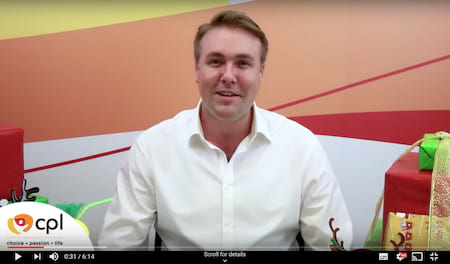
It’s also important to thank people for giving their feedback, and being honest with their feedback, it’s the honesty that helps us go in the right direction. If we expect honesty from them, they expect honesty in return.
Q: How did you form an action plan to address the issues identified in the feedback?
Emma: Pick one or two (maximum) things to focus on – any more, and it’s unachievable. When we communicated the results of our survey and the ‘next steps’, we called for nominations for employee focus groups. We wanted diverse groups of employees who felt they had more to contribute, voluntarily, and we listened to their feedback and helped them form the solution/s. It was a mixture of self-nomination and nomination from their direct supervisors – either way the participation was not mandatory.
You need a good cross section, different roles, different tenure, different engagement levels, different locations. Facilitating these groups to go in a constructive direction is key! You need a good facilitator.
Q: After this step, what were the one or two things you identified? And did you see an improvement a year later, like you’d hoped?
Emma: Our survey focuses on many different aspects of working at CPL, and the different aspects of what forms employee engagement. But benefits and communications were the two key areas we identified for improvement within that year’s survey. One part of addressing this was implementing an employee engagement platform through Reward Gateway, which we called "Caboodle". It gives all our employee access to benefits, communications and all the things that make working at CPL great.
In just over a year, our overall engagement score increased by 4%.
This might seem small to some, but is actually quite significant. Our employees’ satisfaction with benefits went up 16% and communications 7%. We are beyond thrilled with those results.
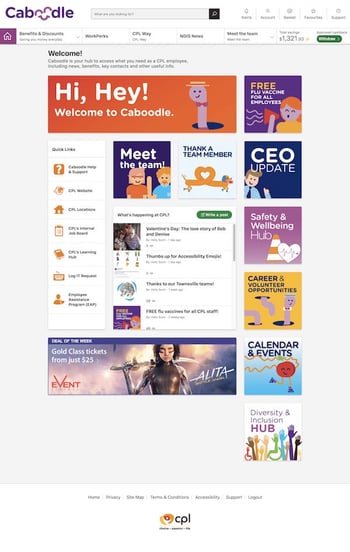
Q: You mentioned in the webinar you want to improve/change how you seek employee feedback - what’s next for CPL?
Emma: Our business changes very quickly, it’s very cyclical in some parts of our organisation, so surveying our employees once per year doesn’t quite give us the best insight into how our employees are feeling throughout the year, just at one point in time.
We also understand that in the service industry, the way our clients feel about how we are delivering service is key to employee productivity and engagement.
We’re currently reviewing our surveying methods and moving to a model of surveying across the employee lifecycle, and layering this feedback with client feedback.
 Joy Adan
Joy Adan
